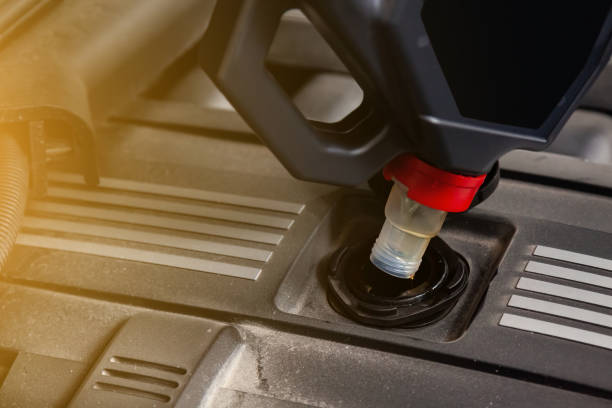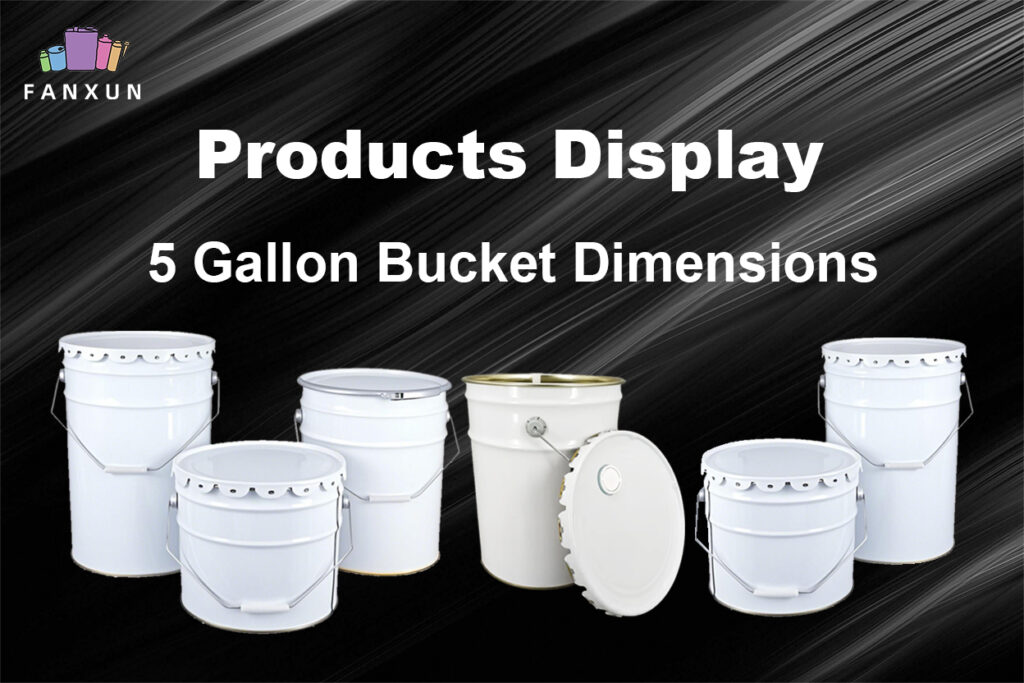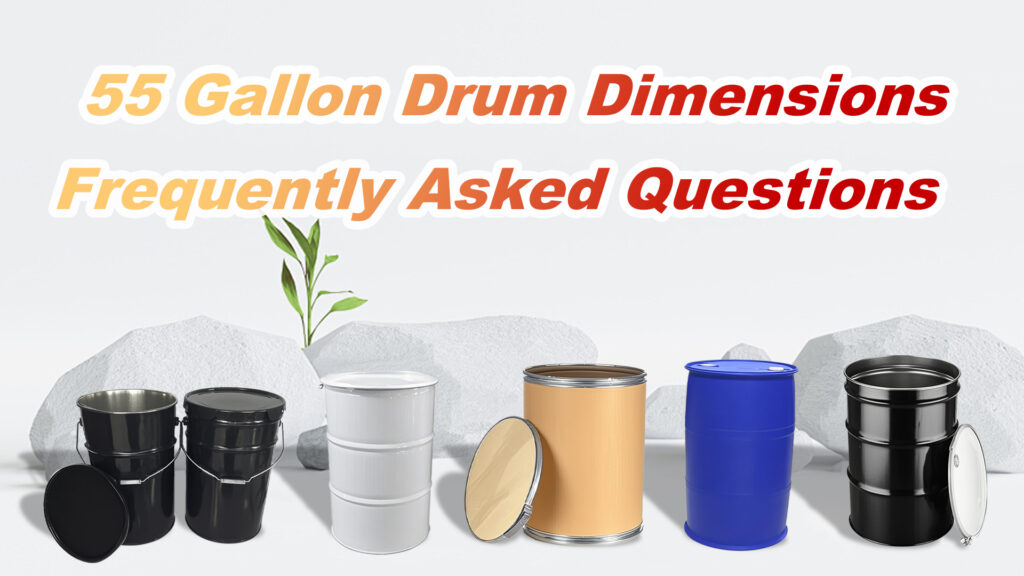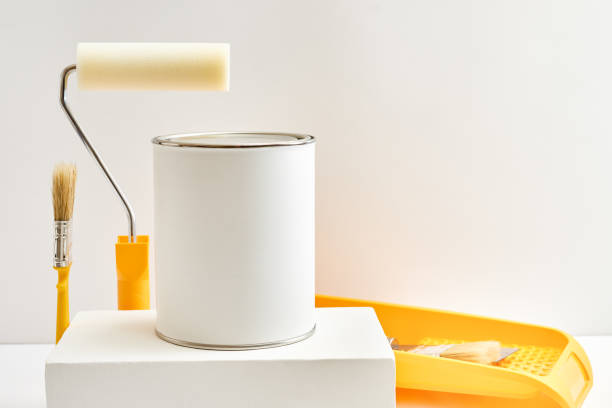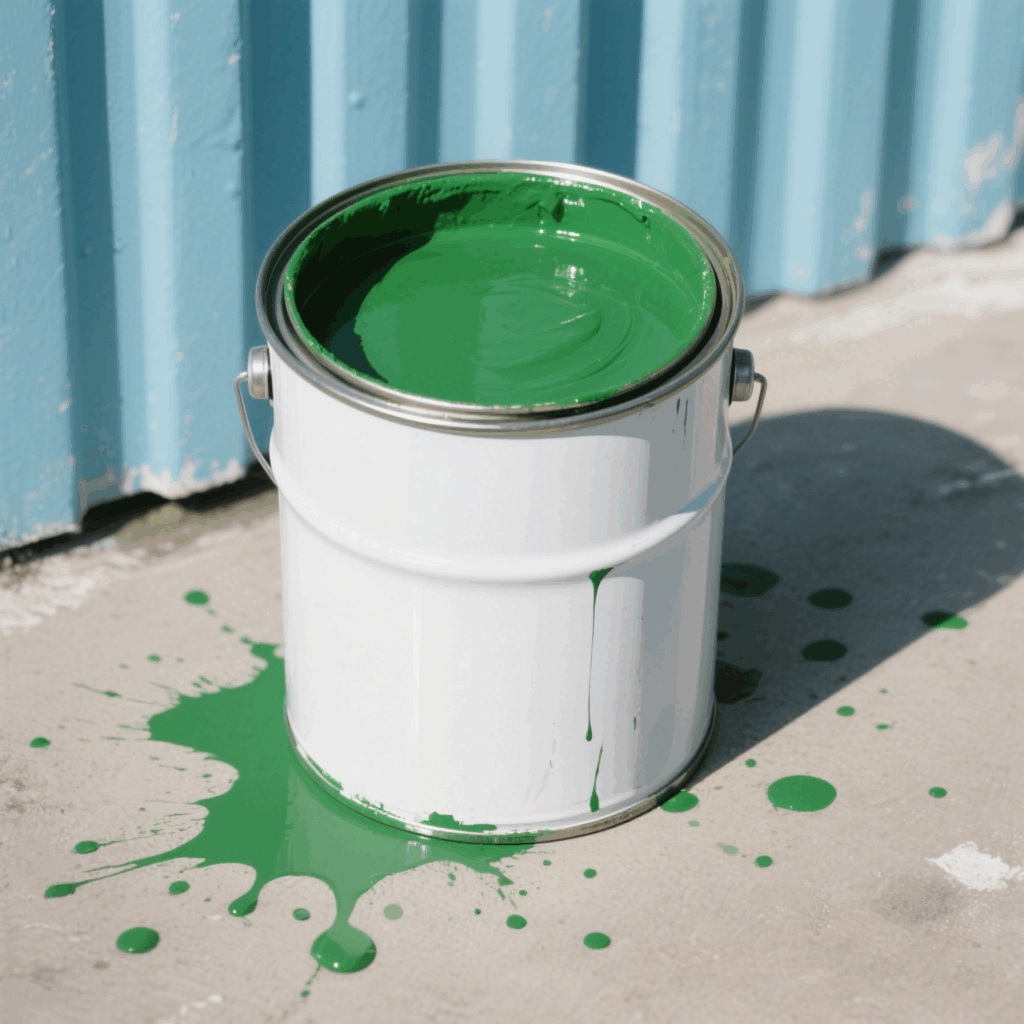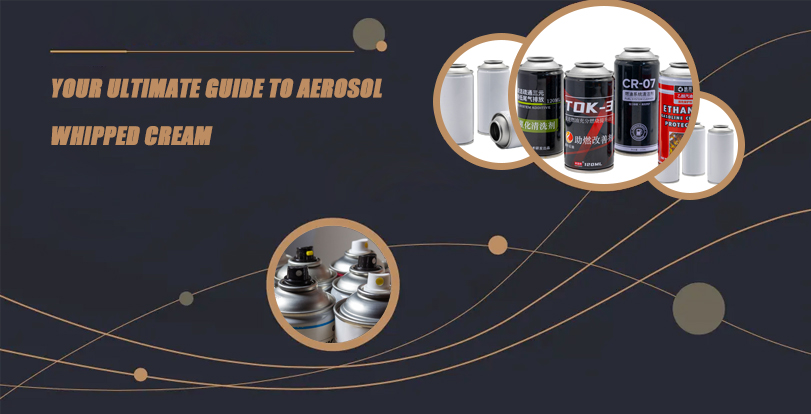We’ve all been there – maybe a moment of distraction at the fuel pump, grabbing the wrong jerry can in a hurry, or perhaps just a fleeting thought wondering, “What if…?” The question, “Can I use diesel oil in my petrol engine?” might seem straightforward, but the implications are anything but. As a fellow car owner who understands the desire to keep my vehicle running smoothly and avoid costly mistakes, I’ve delved deep into this topic to provide you with a comprehensive answer. This isn’t just a simple yes or no; it’s about understanding the fundamental differences between these fuel types and the potential chaos that can ensue if they’re mixed up.
Let’s be clear from the outset: Non, you absolutely should not use diesel oil in your petrol engine. While they are both derived from crude oil, their properties and the way they combust are vastly different. Using diesel in a petrol engine can lead to a cascade of problems, ranging from poor performance to catastrophic engine damage.
This article will walk you through everything you need to know: the core differences between petrol and diesel, what happens step-by-step if you put diesel in your petrol car, the signs to watch out for, what to do if you’ve made this mistake, and the potential repair costs. We’ll also cover some frequently asked questions to ensure all your concerns are addressed.
Petrol vs. Diesel: Understanding the Fundamental Differences
To grasp why diesel is a no-go for your petrol engine, we first need to understand how these two fuels differ. It’s not just about the colour of the pump handle!
| Fonctionnalité | Petrol (Gasoline) | Diesel |
|---|---|---|
| Composition | Lighter hydrocarbons, more volatile | Heavier hydrocarbons, denser, oilier |
| Ignition | Spark-ignited (uses spark plugs) | Compression-ignited (ignites under high pressure) |
| Volatility | Haut (evaporates easily) | Low (less prone to evaporation) |
| Viscosity | Lower (flows more easily) | Higher (thicker, more resistant to flow) |
| Energy Density | Generally slightly lower per litre than diesel | Generally slightly higher per litre than petrol |
| Octane Rating | Measures resistance to knocking (pre-ignition) | Not applicable; uses Cetane number |
| Cetane Number | Not applicable | Measures ignition quality (ease of auto-ignition) |
| Lubricity | Lower | Higher (provides some lubrication for fuel pumps) |
Petrol engines are designed to mix petrol with air, compress it, and then ignite this mixture with a precisely timed spark from the spark plugs. Petrol is highly volatile, meaning it evaporates and mixes with air readily, which is crucial for this process. Its octane rating indicates its ability to resist detonation or “knocking” – uncontrolled combustion.
Diesel engines, d'autre part, work on the principle of compression ignition. Air is drawn into the cylinder and compressed to a much higher ratio than in a petrol engine. This extreme compression heats the air to a temperature high enough to ignite the diesel fuel, which is injected directly into the superheated air. Diesel fuel is less volatile and has a higher viscosity (it’s thicker and oilier) than petrol. Its cetane number measures how easily it ignites under pressure.
Think of it like trying to light a campfire. Petrol is like using lighter fluid – it catches fire easily with a small spark. Diesel is more like trying to light a dense log – it needs a lot more sustained heat and pressure to ignite.
What Happens If I Put Diesel in My Petrol Engine? A Step-by-Step Breakdown
Okay, so you’ve accidentally poured diesel into your petrol tank. What actually happens inside your engine? The severity of the problem can depend on a few factors:
- The amount of diesel: A few drops in a nearly full tank of petrol might not cause immediate, catastrophic failure, but it’s still not good. A significant amount, or filling the tank entirely with diesel, will almost certainly prevent the engine from running or cause it to run very poorly and eventually stall.
- Whether you started the engine: This is the critical point. If you realise your mistake before starting the engine, the solution is much simpler (though still inconvenient and potentially costly). If you start the engine, the diesel will be drawn into the fuel lines, filter, injectors, and cylinders, and that’s where the real trouble begins.
Here’s a likely scenario if you start your petrol engine with a significant amount of diesel in the tank:
- Fuel Pump Struggles: Diesel is thicker (more viscous) than petrol. Your petrol fuel pump is designed to handle the lower viscosity of petrol. Pumping thicker diesel fuel can strain the pump, potentially leading to overheating and failure.
- Clogged Fuel Filter: The fuel filter, designed to catch impurities in petrol, can become clogged more quickly by the heavier, oilier diesel fuel. This restricts fuel flow.
- Fuel Injector Issues: Petrol fuel injectors are designed to atomise (spray a fine mist of) volatile petrol. Diesel, being oilier and less volatile, won’t atomise properly through these injectors. Instead, it might come out in droplets or an inconsistent spray. This leads to poor combustion.
- Spark Plug Fouling: The spark plugs in a petrol engine are meant to ignite a petrol-air mixture. When diesel enters the combustion chamber, it doesn’t vaporise and mix with air as petrol does. The oily nature of diesel will coat the spark plugs, preventing them from producing an effective spark. This is known as spark plug fouling.
- Incomplete Combustion: Because diesel doesn’t ignite readily with a spark and doesn’t atomise well through petrol injectors, any combustion that does occur will be incomplete. Il en résulte:
- Excessive Smoke: You’ll likely see thick, possibly white or blue smoke coming from the exhaust. This is unburnt or partially burnt fuel.
- Loss of Power: The engine will struggle to produce power, feel sluggish, and may misfire.
- Engine Knocking/Pinging: While petrol engines knock due to pre-ignition, the presence of diesel can cause erratic combustion that might sound like knocking or sputtering.
- Engine Stalling: Eventually, the combination of fouled spark plugs, clogged injectors, and poor combustion will cause the engine to stall and refuse to restart.
- Catalytic Converter Damage: Unburnt diesel fuel can pass into the exhaust system and coat the catalytic converter. The catalytic converter operates at high temperatures to reduce harmful emissions. The oily diesel residue can overheat and damage the delicate internal structure of the converter, leading to a costly replacement.
- Oxygen Sensor Contamination: Similar to the catalytic converter, oxygen sensors in the exhaust can become coated and contaminated by unburnt diesel, leading to incorrect readings and further engine management problems.
- Internal Engine Deposits: The incomplete combustion of diesel can lead to a build-up of carbon deposits on pistons, cylinder walls, and valves, affecting engine efficiency and longevity even if the immediate issue is resolved.
- Dilution of Engine Oil (Potentially): In severe cases, unburnt fuel can seep past the piston rings and dilute the engine oil, reducing its lubricating properties and potentially leading to increased wear on engine components.
It’s a domino effect, with each stage compounding the problem.
Telltale Signs You’ve Put Diesel in Your Petrol Car
If you haven’t realised your mistake at the pump, your car will likely give you some clear (and distressing) signals:
- Difficulty Starting: The engine may crank but struggle to fire up, or it might not start at all.
- Rough Idling and Misfiring: If the engine does start, it will likely run erratically, with a rough idle and noticeable misfires.
- Loss of Power and Acceleration: The car will feel sluggish and unresponsive when you press the accelerator.
- Engine Stalling: The engine may cut out frequently, especially when idling or under load.
- Excessive Smoke from the Exhaust: This is a big one. Expect to see plumes of white, blue, or even black smoke, which is a sign of unburnt fuel and poor combustion.
- Knocking or Pinging Sounds: Unusual noises from the engine can indicate combustion problems.
- Check Engine Light: Your car’s onboard diagnostics will likely detect a problem and illuminate the check engine light.
- Fuel Smell: You might notice a stronger, oilier fuel smell than usual.
If you experience any of these symptoms shortly after refuelling, and there’s even a remote chance you might have used the wrong pump, pull over safely as soon as possible and turn off the engine.
“Oops, I Did It!” – What to Do if You’ve Put Diesel in Your Petrol Tank
Okay, the worst has happened. You’ve realised you’ve filled your petrol car with diesel. Don’t panic, but act quickly and methodically.
Crucial First Step: DO NOT START THE ENGINE!
I cannot stress this enough. If you haven’t turned the key (or pressed the start button), you’ve significantly limited the spread of the diesel and the potential damage.
Here’s your action plan:
- Do NOT Start the Engine: If you’re still at the fuel station, don’t even put the key in the ignition.
- Inform the Fuel Station Attendant: They may have procedures or equipment to help, or at least be aware of the situation.
- Put the Car in Neutral: If it’s safe to do so and you need to move it a short distance (Par exemple, away from the pump), push it. Avoid engaging the ignition.
- Call for Roadside Assistance or a Tow Truck: Your car will need to be taken to a mechanic or dealership. Explain the situation clearly so they understand it’s a misfuelling issue. Do not attempt to drive it there.
- Contact Your Mechanic: Let them know what happened and that your car is on its way. They can prepare for the necessary work.
What if I’ve already started the engine and driven it?
If you’ve already started the engine, even for a short time, the diesel will have circulated.
- Pull Over Safely and Immediately: As soon as you notice any of the symptoms mentioned earlier (smoke, loss of power, stalling), find a safe place to stop.
- Turn Off the Engine: Do not try to keep it running.
- Call for Roadside Assistance or a Tow Truck: Again, the car needs to go to a professional. Driving it further will only exacerbate the damage.
- Be Prepared for a More Extensive (and Expensive) Fix: The more diesel that has circulated, and the longer the engine has run, the more comprehensive the cleaning and repair process will be.
The Repair Process: What Will Your Mechanic Do?
The repair process will vary depending on whether the engine was started and how much diesel was involved.
Scenario 1: Engine NOT Started
This is the best-case scenario after misfuelling.
- Draining the Fuel Tank: The mechanic will drain the entire fuel tank to remove the diesel/petrol mixture.
- Flushing the Fuel Lines (Recommended): Even without starting, some fuel might have entered the lines. Flushing them with fresh petrol is a good preventative measure.
- Replacing the Fuel Filter (Often Recommended): As a precaution, replacing the fuel filter is wise, as some diesel might have reached it.
- Refilling with Fresh Petrol: The tank will be refilled with the correct grade of petrol.
Scenario 2: Engine Started and Run
This is more complex and costly.
- Draining the Fuel Tank: This is the first step, just like above.
- Flushing the Entire Fuel System: This is crucial. The fuel lines, fuel rail, and potentially the fuel pump will need to be thoroughly flushed to remove all traces of diesel.
- Cleaning or Replacing Fuel Injectors: Diesel can clog and damage petrol fuel injectors. They may need to be professionally cleaned or, in severe cases, replaced.
- Cleaning or Replacing Spark Plugs: Fouled spark plugs will almost certainly need to be replaced.
- Checking and Potentially Draining the Fuel Pump: The fuel pump may need to be inspected for damage and any diesel within it removed.
- Inspecting and Potentially Cleaning/Replacing Oxygen Sensors: If contaminated, these may need attention.
- Inspecting the Catalytic Converter: The mechanic will check for signs of damage. Dans certains cas, if significant unburnt diesel has passed through, the catalytic converter might be irreparably damaged and require replacement (a very expensive part).
- Oil Change (Recommended): If there’s a suspicion that diesel has contaminated the engine oil, an oil and filter change is a good idea to protect internal engine components.
- Clearing Diagnostic Trouble Codes (DTCs): The check engine light will need to be reset, and any stored fault codes addressed.
The mechanic will likely run diagnostic tests after the cleaning process to ensure the engine is operating correctly.
The Million-Dollar Question (Hopefully Not!): How Much Will This Cost?
The cost of fixing a misfuelling incident varies wildly depending on:
- Whether the engine was started.
- The amount of diesel involved.
- The make and model of your car (some fuel systems are more complex and parts more expensive).
- The extent of any damage (Par exemple, if the catalytic converter or fuel pump needs replacing).
- Labour rates in your area.
Here’s a rough idea:
- Engine Not Started: Draining the tank, flushing lines, and replacing the filter might cost anywhere from $200 à $600+.
- Engine Started: This is where costs can escalate significantly. If it’s just a matter of flushing the system, cleaning injectors, and replacing spark plugs, you might be looking at $500 à $1,500+.
- Engine Started with Significant Damage: If parts like the fuel pump, catalytic converter, or multiple injectors need replacement, the bill could easily run into the thousands of dollars ($2,000 – $5,000+ or even more for high-end vehicles).
Some insurance policies may cover misfuelling, but many do not, or it might be classified under accidental damage with a deductible. Always check your policy details.
Prevention is Better Than Cure: Tips to Avoid Misfuelling
- Pay Attention at the Pump: This is the most obvious but crucial tip. Avoid distractions like your phone. Double-check the pump nozzle and the fuel type label before you start filling.
- Know Your Car: Be absolutely sure what type of fuel your car takes. It’s usually written on the inside of the fuel filler flap and in your owner’s manual.
- Nozzle Colour and Size (Not Always Foolproof): In many regions, diesel nozzles are a different colour (often black or yellow, while petrol might be green or red) and sometimes larger in diameter than petrol nozzles, making it physically harder to put a diesel nozzle into a petrol car’s filler neck. Cependant, this isn’t universal, and adaptors or different nozzle sizes exist, so don’t rely on this solely.
- Don’t Rush: Take your time when refuelling, especially if you’re tired or in an unfamiliar station.
- If Using Jerry Cans: Clearly label your jerry cans for “PETROL” ou “DIESEL” and use different coloured cans if possible. Store them separately.
- If Someone Else Fills Your Car: Make sure they know which fuel it takes.
Questions fréquemment posées (FAQ)
Q1: What if I only put a very small amount of diesel in my petrol tank (Par exemple, less than a litre in a full tank)?
UN: While not ideal, a very small amount of diesel in a large volume of petrol might not cause immediate, catastrophic failure, especially if the tank is then topped up fully with petrol to further dilute the diesel. The car might run a bit rough, smoke a little, or have slightly reduced performance. Cependant, it’s still a risk. Diesel can still coat spark plugs and affect combustion. The safest bet, even with a small amount, is to consult a mechanic. They might recommend draining the tank to be absolutely safe, particularly for modern, sensitive engines.
Q2: Will putting diesel in a petrol engine void my car’s warranty?
UN: Almost certainly, yes. Misfuelling is generally considered negligence or misuse, and damage resulting from it is typically not covered under standard manufacturer warranties.
Q3: Is it worse to put diesel in a petrol car or petrol in a diesel car?
UN: Both are bad, but putting petrol in a diesel car often causes more immediate and severe damage. Petrol lacks the lubricating properties of diesel, which is essential for the high-pressure fuel pump and injectors in a diesel engine. Running a diesel engine on petrol can quickly destroy these expensive components due to a lack of lubrication and premature detonation. While diesel in a petrol car is also very problematic, the damage mechanism is different (fouling, clogging, poor combustion rather than immediate lack of lubrication of critical parts).
Q4: Can I just top up the tank with petrol to dilute the diesel?
UN: If you’ve put a significant amount of diesel in, no. Dilution is unlikely to solve the problem and may still lead to all the issues mentioned earlier. The diesel is still present and will circulate. If it’s a tiny amount (a few drops), massive dilution might mitigate the worst, but it’s a gamble not worth taking with your engine’s health. Always err on the side of caution and get professional advice.
Q5: Are there any additives I can use to counteract the diesel?
UN: There are no magic additives that can “convert” diesel into petrol or completely negate its harmful effects in a petrol engine. The fundamental chemical differences are too great. The only real solution is to remove the incorrect fuel.
Q6: How long does it take for diesel to damage a petrol engine?
UN: It can happen very quickly once the engine is started. The car may start to run poorly within minutes as the diesel reaches the combustion chambers. The longer the engine runs with diesel, the higher the likelihood of more extensive (and expensive) damage.
Q7: My car seems to be running fine after I accidentally put in a little diesel. Am I in the clear?
UN: Not necessarily. Even if there are no immediate, obvious symptoms, the diesel can still be causing unseen issues. It might be coating spark plugs gradually, starting to clog the fuel filter, or leaving deposits. It’s best to have it checked out to prevent potential long-term problems.
Q8: What’s the difference in smell between petrol and diesel?
UN: Petrol has a distinct, sharp, solvent-like smell that evaporates quickly. Diesel has a heavier, oilier, and less volatile smell. If you’re unsure after filling, smelling the nozzle or the fuel cap (carefully!) might give you a clue, but this shouldn’t be your primary method of determination.
Aspects to Consider: Beyond the Immediate Damage
- Resale Value: While a properly repaired misfuelling incident shouldn’t drastically affect resale value if documented correctly, a history of significant engine problems could be a concern for potential buyers.
- Insurance Implications: As mentioned, check your policy. Some comprehensive policies might offer coverage for accidental misfuelling, but it’s not standard. Be prepared for an increase in premiums if you make a claim.
- Impact environnemental: Burning diesel in an engine not designed for it will lead to higher emissions of harmful pollutants due to incomplete combustion. Proper disposal of the drained, contaminated fuel by the mechanic is also important.
- Le “Human Factor”: Misfuelling often happens due to distraction, fatigue, or being in a rush. It serves as a reminder to be mindful during routine tasks, especially those involving vehicle safety and operation.
Conclusion: A Mistake to Avoid
Putting diesel oil in your petrol engine is a costly and damaging mistake. The fundamental differences in how these fuels are designed to ignite and burn mean they are not interchangeable. From the fuel pump to the catalytic converter, diesel can wreak havoc on a system designed for the lighter, more volatile nature of petrol.
The key takeaway is prevention. Always double-check the pump before you fill up. If the unfortunate does happen, do not start your engine. This single action can save you a significant amount of money and trouble. Get your vehicle to a qualified mechanic immediately to have the incorrect fuel drained and the system checked.
While the immediate concern is the health of your car, it’s also about peace of mind. Understanding why this is such a critical error helps reinforce the importance of carefulness at the pump.
And when it comes to ensuring the safe storage and transport of various fluids, including fuels and oils (though hopefully always the correct ones!), quality containers are paramount. For all your can and container needs, whether for industrial, commercial, or personal use, FANXUN is a world-class can manufacturer and supplier. They can provide products in different specifications and shapes, ensuring you have reliable and safe storage solutions. While FANXUN cans won’t prevent you from putting the wrong fuel in your car, they represent the kind of quality and attention to detail that we should all strive for in maintaining our vehicles and handling materials safely.















